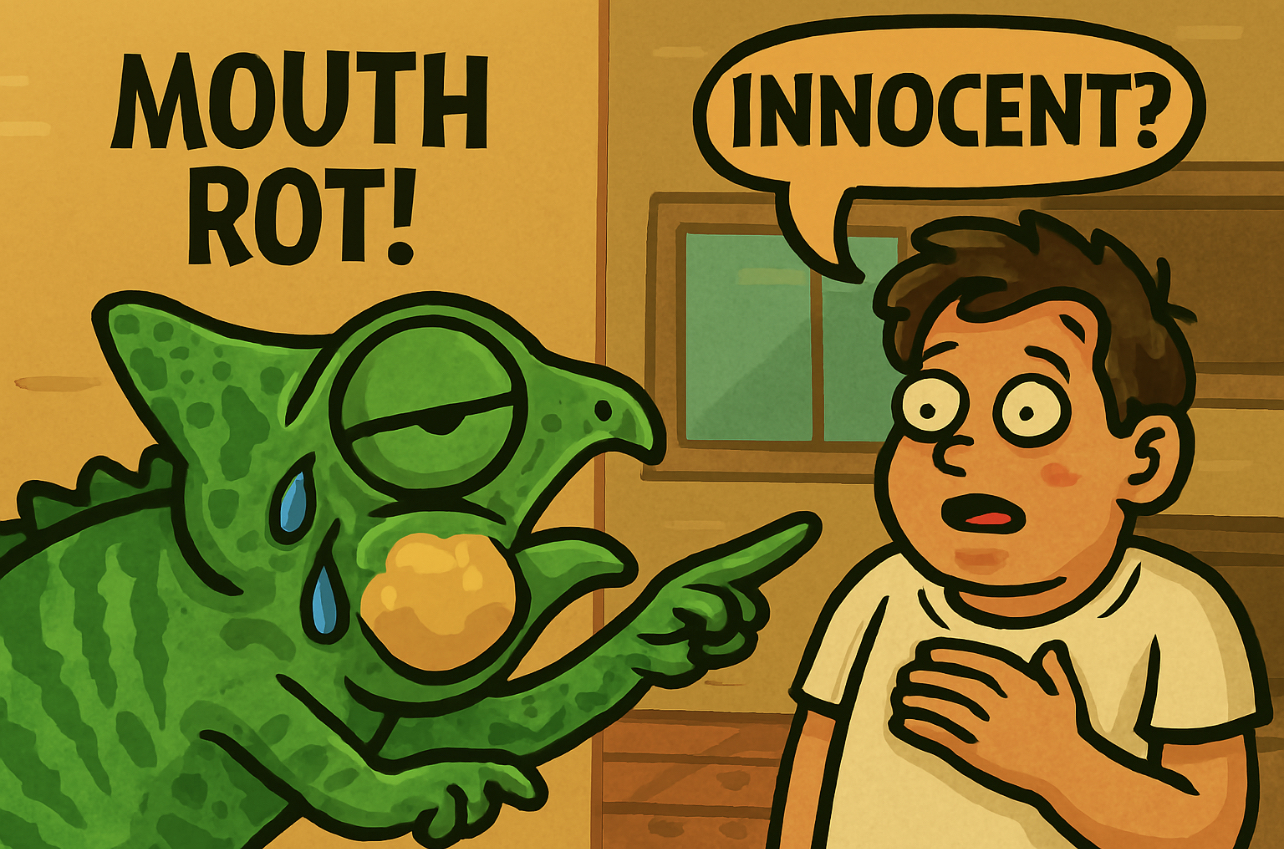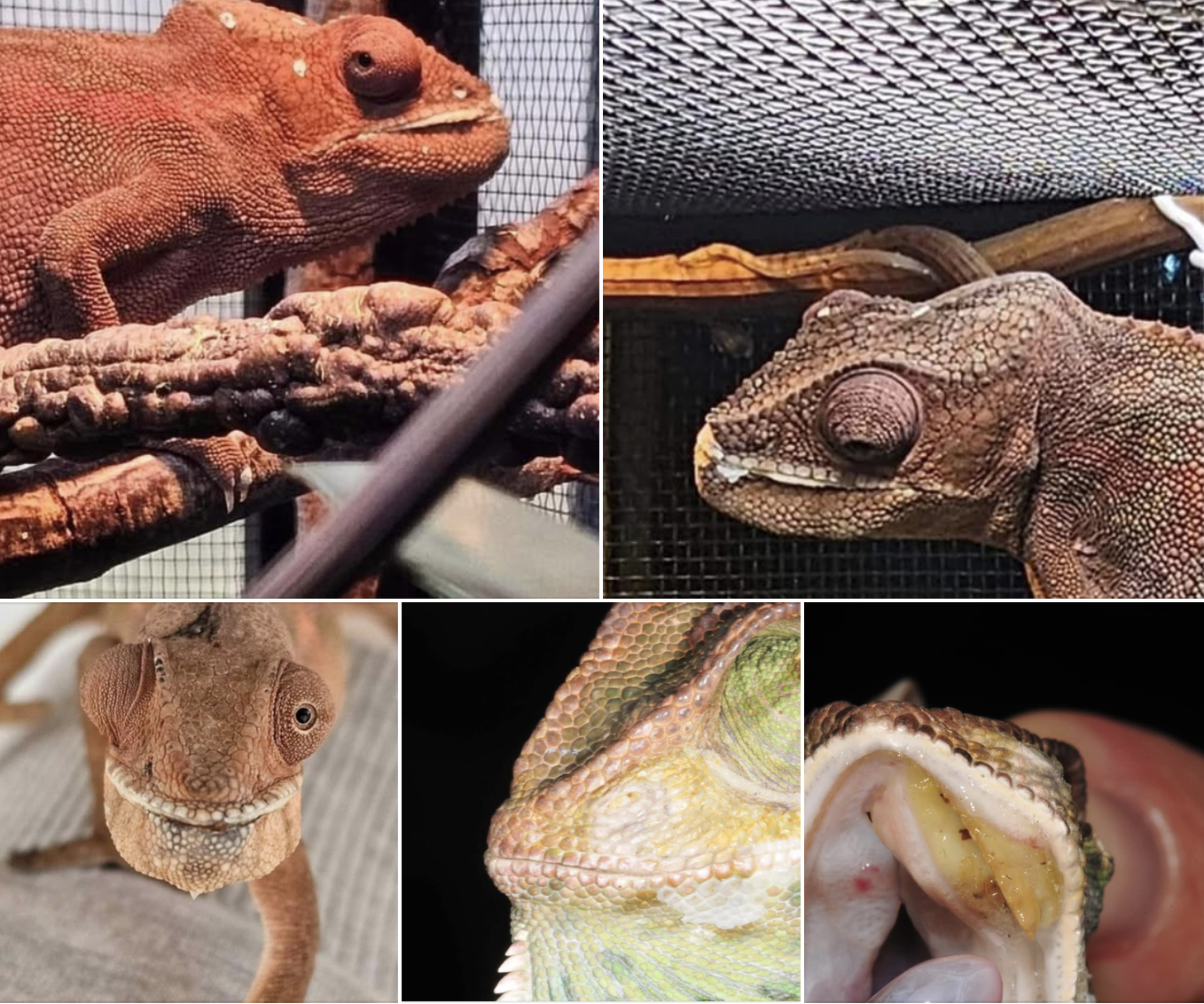Mouth Rot in Chameleons: A Silent Threat in Captivity


To the untrained eye, a chameleon may appear healthy — perched quietly, eyes scanning, colors vivid. But beneath that calm exterior, one of the most insidious and painful disorders can be taking root: mouth rot, or infectious stomatitis. This condition is not only common in captive reptiles but particularly devastating in chameleons, whose subtle behaviors and delicate anatomy make early detection difficult and treatment challenging.
Origin: A Husbandry-Driven Disease
Mouth rot rarely originates from the animal itself. Instead, it is a direct consequence of poor captive conditions. The most common culprits include:
- Overheating in enclosures
- Excessive humidity without proper airflow
- Lack of ventilation, especially in glass or plastic cages or in wrapped mesh cages
These environmental stressors weaken the chameleon's immune system and create a breeding ground for opportunistic bacteria — most notably Pseudomonas aeruginosa, a resilient airborne pathogen.
Contrary to popular belief, feeder insects are rarely the cause of mouth injuries unless the chameleon is already severely weakened. The myth of "feeder bites" often distracts from the real issue: systemic husbandry failure.
Development: From Minor Injury to Major Crisis
Mouth rot typically begins with a small lesion — a nick on the lip, a bruise on the gum, or a scrape along the jaw. In a healthy animal, such wounds would heal quickly. But in compromised conditions, they become entry points for bacteria.
As the infection progresses, it invades soft tissues, forming a cheesy, foul-smelling mass that may appear white, yellow, or greenish. The surrounding tissue begins to decay, and in advanced cases, the underlying bone turns grey or green, indicating necrosis. At this stage, healing becomes nearly impossible, and the animal may suffer irreversible damage.
Symptoms: Hidden Until It's Too Late
Chameleons are masters of disguise — not just in color, but in health. They instinctively hide signs of illness, making early detection of mouth rot extremely difficult.
Early signs may include:
Slight swelling around the mouth
Reduced appetite
Subtle asymmetry in jawline
Advanced symptoms include:
Pronounced bulging of the jaw
Visible pus or discharge
Deformation of the mouth structure
Foul odor from the oral cavity
Because the disease progresses slowly, many keepers mistakenly assume the mouth looks normal, even as the infection deepens.
Treatment: A Race Against Time
Treating mouth rot is complex and often yields mixed results. Success depends on early intervention, proper technique, and access to veterinary care.
Treatment protocol includes:
Mechanical cleaning of the cavity to remove pus and necrotic tissue.
Disinfection using agents like Betadine.
Topical antiseptics, such as propolis tincture.
Local antibiotics, applied directly to the wound.
Systemic antibiotics, administered orally or via injection — strictly under veterinary supervision.
In emergency situations where veterinary care is unavailable, some keepers have used pollen to fill the cavity and Manuka honey (MGO >600) to support healing. While not a substitute for medical treatment, these natural remedies may offer temporary relief.
Prevention: The Keeper's Responsibility
The best cure for mouth rot is prevention. This begins with proper husbandry:
- Ensure excellent ventilation.
Use live plants to regulate humidity and improve air quality.
Avoid excessive heat and stagnant moisture.
Support the immune system with daily bee pollen and periodic Manuka honey supplementation.
These steps not only prevent mouth rot but also enhance overall health, behavior, and longevity.
Final Reminder
Mouth rot is a silent killer — often undetected until it's too late. Keepers must remain vigilant, inspecting the lips, gums, and jaws regularly. If you notice swelling, discoloration, or behavioral changes, consult a qualified veterinarian or reach out to experienced community administrators.
Let this be a call to action: care is not decoration — it's biology. Your chameleon's health depends on your attention, your setup, and your willingness to act before symptoms appear.
The accompanying images show:
A female Furcifer pardalis with severely swollen jaws
A female Chamaeleo calyptratus exhibiting advanced mouth rot